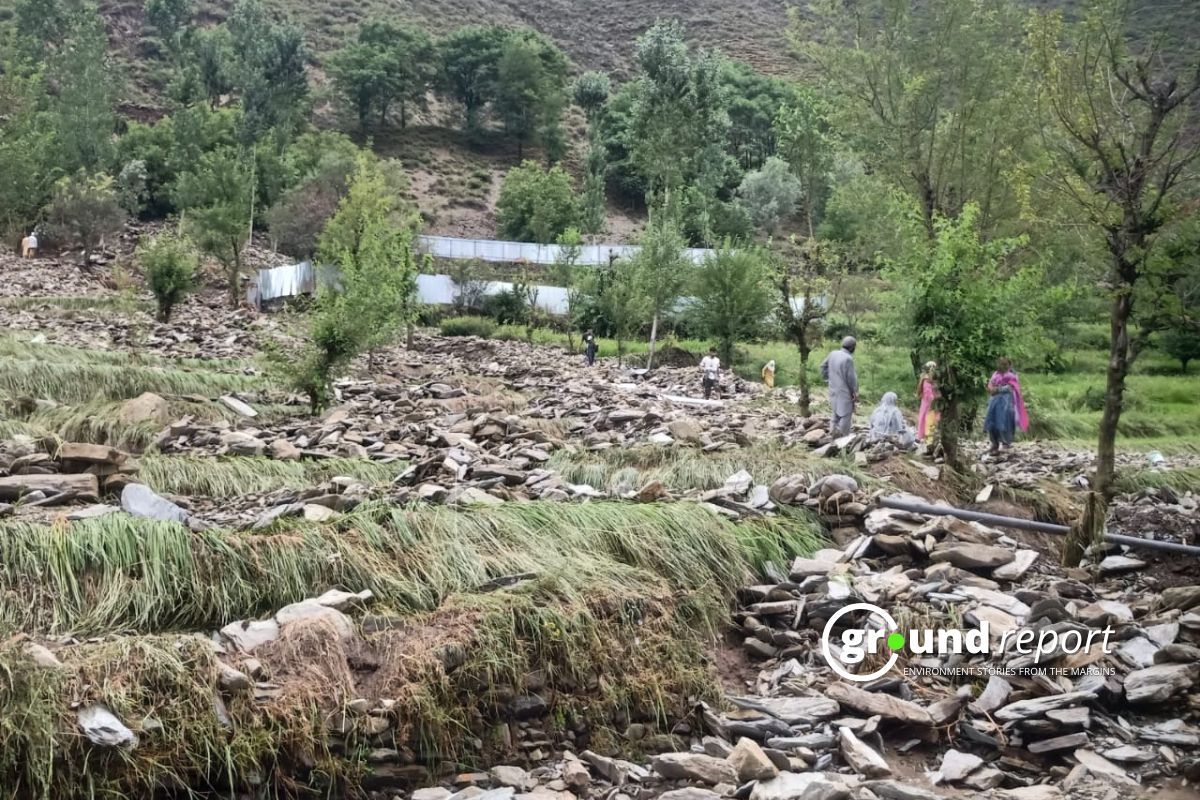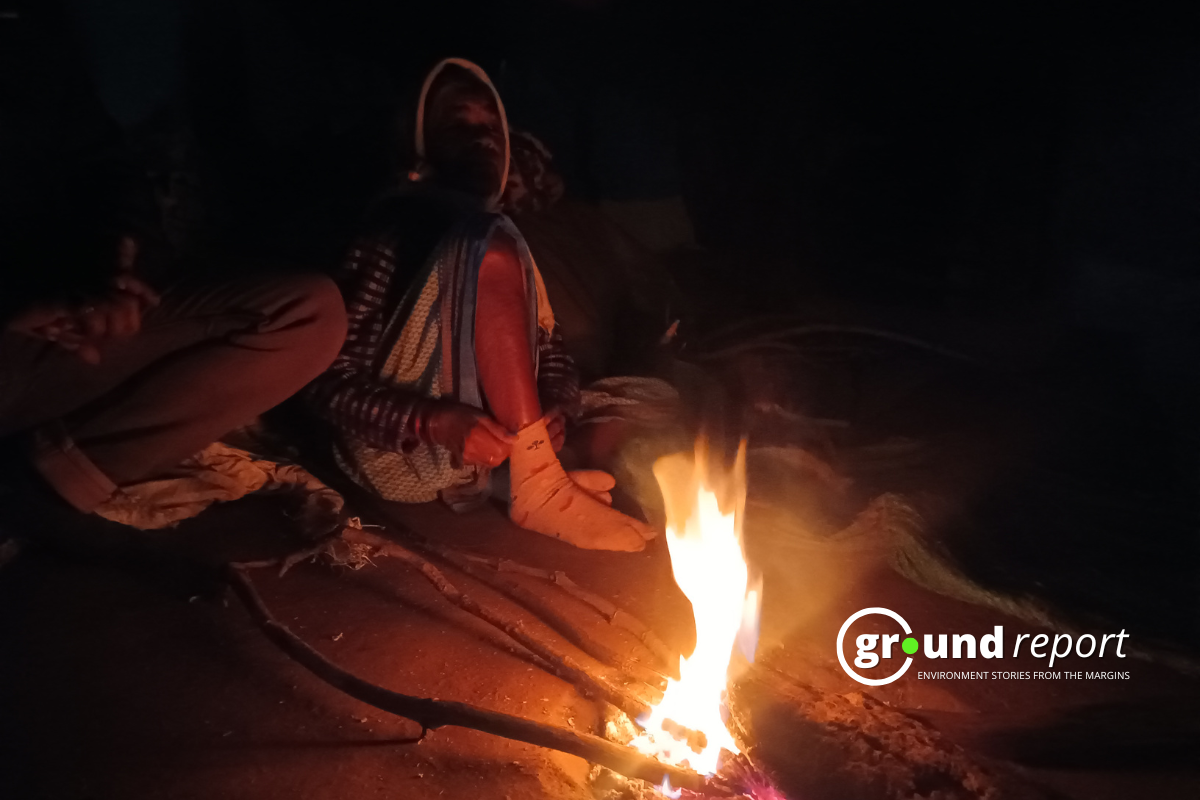Read in Hindi | Rajesh Kinari works at EkLavya Foundation, an institution dedicated to preparing study materials for school students. While he enjoys his work, he has a special fondness for his office building located in Bhopal’s Jatkheri area. Designed to be eco-friendly, it provides a comfortable workspace during the day, even amidst intense heat waves.
“The city hasn’t seen such intense heat for more than two months before this year. Despite the extreme temperatures, we didn’t feel uncomfortable inside the building… Standing at the main entrance, the air coming from inside gives us a sense of its relative coolness, “he shares.
EkLavya Foundation’s building is constructed using environmentally friendly and sustainable techniques, from the foundation to the walls. This ensures that even during severe heat waves, when the weather outside becomes unbearable.
Employees can continue to work comfortably despite the heat. The organization’s Executive Officer, Manoj Nigam, explains that when envisioning this building, they prioritized environmental friendliness. This commitment is evident in everything from the floors, walls, and foundation, which not only adhere to eco-friendly standards but also exemplify effective waste management and water conservation practices. From foundation to roof, every aspect of the building is environmentally conscious, Nigam adds.

Environment-friendly roof and foundation
Having studied civil engineering himself, Nigam explains that the land where his office stands has black soil, which is typically unsuitable for building construction due to its expansive nature. However, for the foundation of this building, they dug to a depth of up to 10 feet. Normally, this would involve filling the foundation with gravel and disposing of the black soil elsewhere. Instead, they solidified the black soil using lime. This approach not only prevented wastage but also saved energy.
Nigam adds,
“We excavated soil equivalent to what would fill 200 to 250 trucks. By solidifying this soil with lime rather than transporting it elsewhere and bringing in gravel, we significantly reduced fuel consumption.”
However, the roof of this building is made from traditional concrete. But, a layer of Extruded Polystyrene (XPS) insulation foam board has been added on top of the roof, painted with a white waterproof coat. This transforms sunlight and helps maintain a relatively cooler temperature inside the building.

Walls that keep the building cool
The east and west walls of this building are constructed as “cavity walls“. This construction method involves creating two walls with a gap between them. This design allows air to become trapped within the gap, which effectively regulates the building’s temperature by keeping it cool in summer and warm in winter.
Working as a designer in this office, Rakesh Khatri sits near one of these cavity walls. He notes,
“When I sit near a wall at home, I feel intense heat. However, here, even though I spend most of my day near the wall, I don’t feel that heat.”
One significant reason why conventional buildings unexpectedly become hot during summers is the cement plaster applied to their walls. To mitigate the Urban Heat Island Effect (UHIE), Manoj from Bakaul has used less than 4% cement in constructing this building. Additionally, the walls here are left unplastered, which prevents the building from overheating.
This building has coolers, but no air conditioners. Shivnarayan Gaur of Ekalavya’s publication team says.
“The temperature in this building is about 5 degrees lower compared to outside. There are coolers here, but only in a few places. Despite this, we don’t feel the heat so intensely.”
Collection and reuse of water

The water crisis in Indian cities during summers is a stark reality and Bhopal is no exception. However, Manoj describes the uniqueness of Ekalavya’s environment, saying that they collect rainwater for later use. Additionally, a water treatment plant is installed in this building. The kitchen and bathroom sink water is treated here. After treatment, clean water is used in the garden.
Approximately 30 thousand square kilometres have been built in this building. Four recharge wells have been created. Each recharge well is up to 5 feet wide and 20 feet deep. Rainwater is collected through drains. In this way, this building also recharges groundwater. According to an estimate, through rainwater harvesting, we can save around a thousand litres of water every year in a square meter area.
Manoj says that due to these recharge wells, he saves about 40 to 50 lakh liters of water every year. Additionally, the bathrooms of this building are made with special technology, where water is not needed for flushing.
What is a waterless urinal?
The toilets in this building have been innovatively designed by Ekam Eco Solutions. According to their insights, it’s a misconception that flushing human urine with water is necessary to prevent odour. They argue that since human urine is 95 per cent water, it can naturally flow through gravity without causing any odour.
Their ‘waterless urinal‘ design features a bowl-shaped structure in the main pipe. When used, urine flows down through this structure, and then a ball automatically descends to seal the pipe with an airlock mechanism. This not only prevents odours but also conserves water effectively.
In essence, this building not only harvests rainwater but also minimizes its overall water consumption. Manoj emphasizes,
“We don’t waste a single drop of water on our campus, and we ensure none of it goes to waste outside. Every drop is precious to us.”
Usage of waste materials

Many areas within this building are constructed using recycled materials. For instance, old windows salvaged from train coaches adorn the walls, and cloth from textile mills is repurposed to partition rooms.
Manoj explains that this approach stems from a commitment to environmental stewardship, aiming to minimize waste.
While the building isn’t officially certified as a ‘green building,’ it incorporates various practices aimed at reducing environmental impact. Additionally, bells and plum trees are installed to educate urban children about local flora. The presence of jamun and mango trees further enhances biodiversity on the premises. Manoj Nigam adds,
“Even while planting trees, we have thought more about biodiversity than beauty.”
The construction of this building amounted to Rs 4.5 crores. Nigam emphasizes that while not every building can be constructed similarly, there are steps that can be taken. He urges the government to mandate rainwater harvesting and household water treatment plants in every housing society. Implementing these measures across the board could significantly benefit the environment.
Support us to keep independent environmental journalism alive in India.
Keep Reading
MP farmers battle stray animals, and sleepless nights to protect crops
Pesticides and agriculture threaten Sarus Cranes at Indore’s Yashwant Sagar wetland
Changing weather patterns impacts soybean crops in the Dewas region of MP
Follow Ground Report on X, Instagram and Facebook for environmental and underreported stories from the margins. Give us feedback on our email id greport2018@gmail.com.
Don’t forget to Subscribe to our weekly newsletter, Join our community on WhatsApp, Follow our Youtube Channel for video stories.







